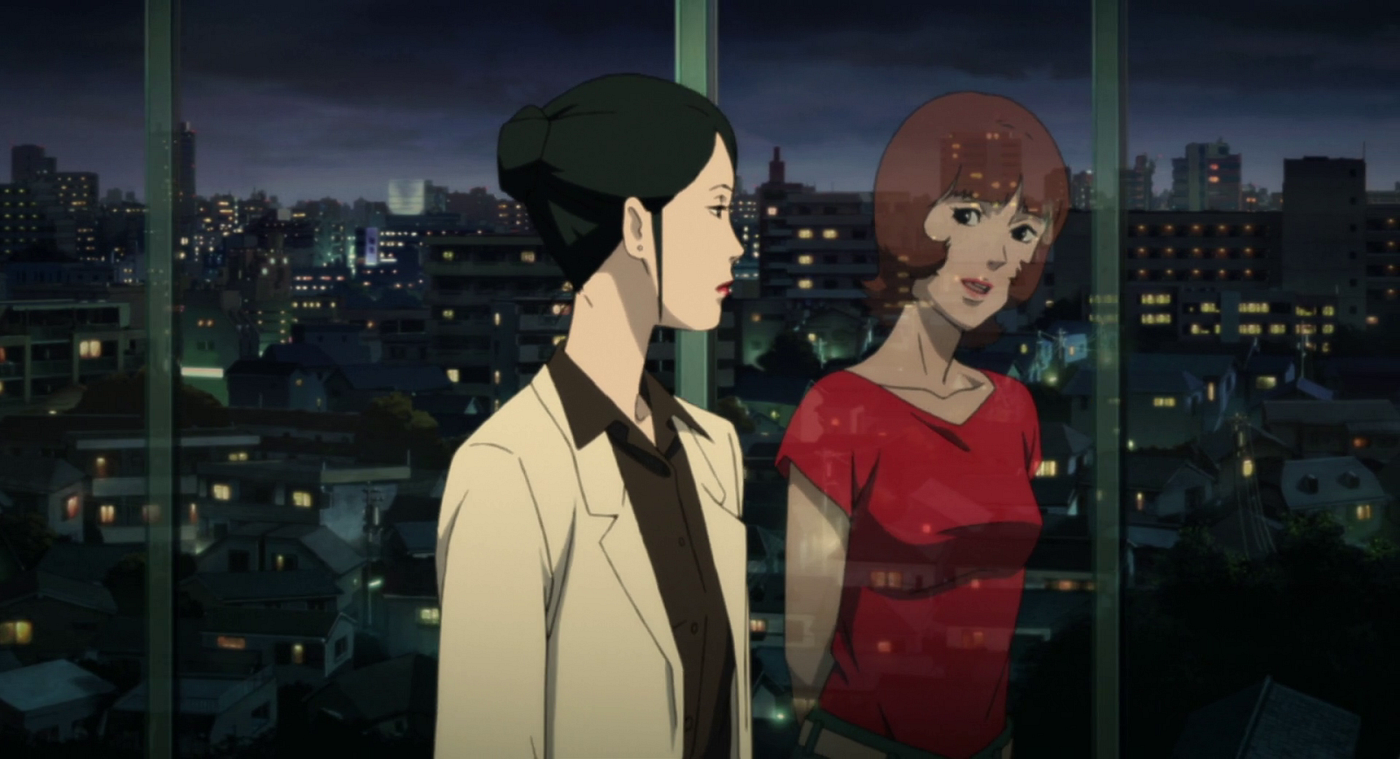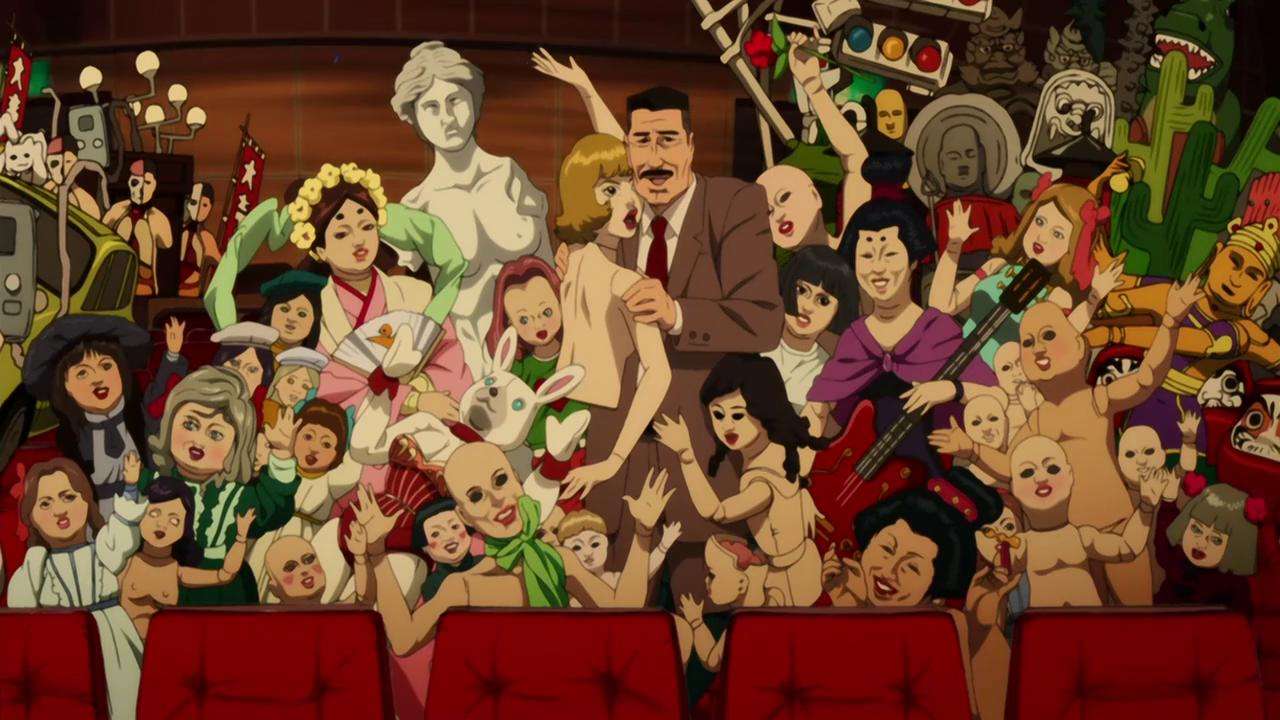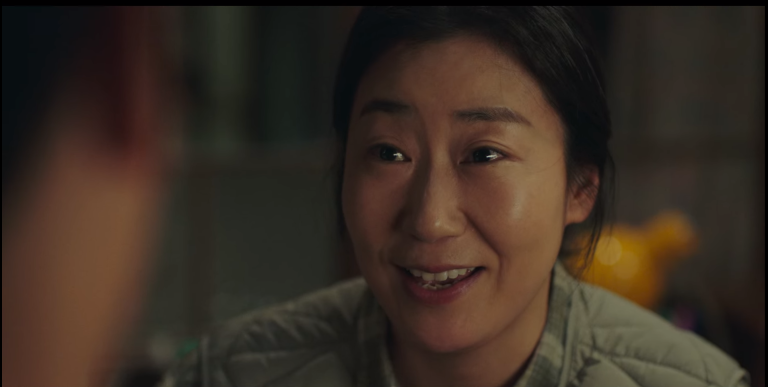Visually breathtaking and cerebrally stimulating, Satoshi Kon’s “Paprika” (2006) probes the limits of what is possible in a dream and what is really happening in the world. Set in the not-too-distant future, the plot centers on the DC Mini, a groundbreaking tool that therapists may use to access and engage with patients’ dreams in order to address their psychological concerns. Under the identity “Paprika,” the quiet and solemn Dr. Atsuko Chiba utilizes the DC Mini to aid patients.
The theft of the DC Mini complicates the story, as does the pandemonium that ensues when people’s fantasies become their reality. In an effort to recover the stolen gadgets and put everything back in line, Paprika teams up with Dr. Shima, one of her colleagues, and Detective Konakawa, who is coping with his own psychiatric problems.
Paprika (2006) Plot Summary & Movie Synopsis:
What’s the link between Chiba and Paprika?
At the start of the film, we meet Atsuko Chiba, a woman of many talents who’s living anything but a normal life. By day, she’s a top-tier scientist, but by night, things take a wild turn. The story is set in a future where technology has hit its peak, and the world is teeming with advancements. In this future, there is a device called DC Mini, a cutting-edge device that lets you peek into other people’s dreams. It’s still in the prototype phase, with plenty of kinks to work out. But once it’s perfected, people will be able to enter into other people’s dreams even while wide awake. Basically, it’s a dream machine that lets you live both reality and fantasy.
Heading the project is Atsuko Chiba, who’s secretly moonlighting as “Paprika” to help those in need. Since the device is still in the works, it lacks the safeguards to prevent unauthorized use. At the start of the film, Chiba, as Paprika, is helping Detective Konakawa, who’s knee-deep in a homicide case. Konakawa is plagued by dreams of murder, where he has witnessed the crime but is unable to catch the killer.
How does the DC Mini spark conflict in Paprika?
As mentioned, the DC Mini gives anyone the power to waltz right into someone else’s dream. That’s why it’s so valuable, and people would pay top dollar for it. A few days later, disaster strikes. Chiba gets the news that someone has swiped the DC Mini. Tokito, another scientist, suggests they just make another one. However, Chiba knows better that if this device were in the wrong hands, it could wreak serious havoc.
Moreover, if Chairman Inui finds out, he’ll lose his temper and will finally have a solid reason to shut down the project for good. Chairman Inui is against the creation of the device from the start, believing that meddling with dreams is a bad idea. But Shima and the others see the DC Mini as their ticket to a major breakthrough in treating psychiatric patients haunted by recurring nightmares. Unfortunately, now, they’re in a race against time to recover the stolen device before things spiral out of control.

How does the stolen DC Mini threaten everyone’s well-being?
The angry chairman pulling the plug is the least of their worries. As mentioned earlier, there’s no restrictive access on the DC Mini, meaning anyone can use it however and whenever they want. Plus, the DC Mini stores a ton of data, which the thief could use to terrorize people by infiltrating their dreams. This could spell chaos for everyone. Just imagine someone hacking into your dreams and turning them into nightmares. Inui’s worst fears come true when the dream thief, now dubbed the “dream terrorist,” uses one of Shima’s patients’ dreams to project into Shima’s subconscious.
Unable to cope, Shima jumps out of a window but miraculously survives. Chiba and her team look into Shima’s dream and notice Himuro, giving the impression he’s the culprit behind the theft of the DC Mini. To get to the bottom of it, they search Himuro’s apartment and find it littered with broken mannequins and dolls—the same eerie figures Shima saw in his dreams. The dream terrorist doesn’t stop there; he attempts to take over Chiba’s subconscious and nearly succeeds. But thanks to Osnai, she narrowly escapes.
Is Himuro the real culprit?
Chiba realizes she can’t tackle Himuro solo. Therefore, she sends in Paprika, her dream alter-ego, to wake up Shima. But before they can pull it off, the dream terrorist claims two more victims. With the chaos escalating, the chairman pulls the plug on the project, issuing a strict order on the use of the device. Chairman Inui says it’s caused enough havoc already. Chiba and Tokito track down Himuro to an abandoned children’s park and watch in horror as he falls to the concrete. That’s when they discover Himuro is just another victim and is being terrorized by someone else’s dream. Tokita tries to tap into Himuro’s dreams to unmask the real culprit but ends up getting trapped. In reality, Tokita’s and Himuro’s dreams merge into Konakawa’s dreams. This means all the dreams are starting to merge into one colossal nightmare.
So who is the real culprit?
After Paprika taps into Himuro’s dream to free Tokita, she discovers that the dream terrorist has been in front of their eyes the whole time. The culprit is none other than Chairman Inui. It turns out that Himuro was just a pawn. He was nothing but a hollow shell manipulated by Inui’s sinister plans. Unlike others, his conscious mind was bombarded with multiple nightmares. Inui targeted Tokita because he’s the mastermind behind the technology that lets you peek into others’ dreams, something Inui believes should never exist. In addition, Inui isn’t doing this alone. He has Osanai, the scientist who’s been friendly with Chiba from the start, on his side.
Paprika tries to escape the dream world, but the duo eventually captures her. Inui orders Osanai to eliminate Paprika (Chiba). However, Osanai hesitates because he’s head over heels in love for her. Inui is dead set on ending Chiba’s life, knowing she’s bound to cause trouble for them. Under Inui’s control, Osanai makes an attempt on Chiba’s life, but Konakawa saves her. In the ensuing struggle, Osanai meets his end in both the real and dream worlds.
Paprika (2006) Movie Ending Explained:
Is Paprika able to separate the dream world from the real world?

As the movie heads into the final phase, the real world and the dream world start to collapse into one. That bizarre parade we keep seeing in the dream world is now spilling into the real world. This means that Paprika and Chiba can now exist together in the same reality. Chiba also spots Tokita rampaging through the city as a giant yellow robot but manages to save Tokita by finally confessing her true feelings for him. Chiba has always been in love with Tokita, but she kept those feelings under wraps. Despite Tokita being an overweight scientist with a voracious appetite, Chiba loves him for the kind-hearted soul he truly is. Underneath all that, he’s just a gentle giant wanting to make the world a better place.
After saving Tokita, all eyes turn to Chairman Inui, who has morphed into a massive silhouette and has the power to control everyone’s dreams. Paprika transforms into a baby and starts devouring the Chairman’s dark dreams, growing larger with each bite. Eventually, she becomes big enough to consume the Chairman entirely, separating the dream world from reality. With everything back to normal, Chiba and Tokita are now together. Konakawa receives a message from Paprika announcing that Chiba and Tokita are getting married. She also gives him a playful nudge to check out the film “Dreaming Kids.”
Paprika (2006) Movie Themes Analyzed:
In “Paprika,” Dr. Atsuko Chiba, who moonlights as dream detective Paprika, represents the split between our waking selves and our dream personas. By entering into and tweaking patients’ dreams, she helps them face their deepest issues while also showing just how similar the real world and the dream world are. Her switch between the no-nonsense Chiba and the playful Paprika shows how fluid our identities can be when we’re in the dream world.
Detective Konakawa, on the other hand, battles with recurring dreams about an unsolved crime he can’t quite remember. This brings out the theme of unresolved trauma. His attempts to make sense of these dreams mirror the larger struggle of separating dream-induced chaos from real life. When the DC Mini, a device meant to control dreams, is stolen and dreams start to converge into reality, the film reveals just how vulnerable our minds can be when dreams take over.
Through a series of interconnected dreams, “Paprika” shows that the dream world isn’t just a fun escape. It can be the front seat to our fears and desires. The characters’ experiences show how our dreams reflect our innermost struggles and the fragility of our psyche when we’re confronted with situations we cannot escape.







![Bright: Samurai Soul [2021] Review – A Servicable Story About Orcs, Elves, And Humans Elevated By Gorgeous Animation](https://79468c92.delivery.rocketcdn.me/wp-content/uploads/2021/10/Bright-Samurai-Soul-Netflix-Review-1-768x384.jpg)